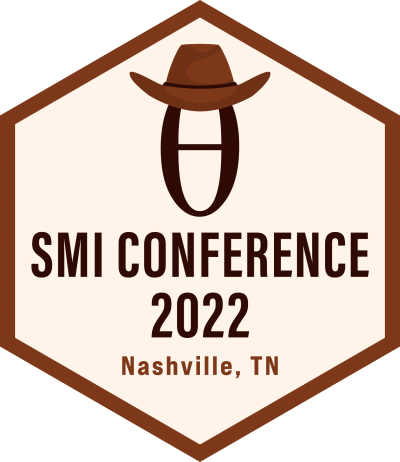Friday, May 27, 2022 • 2:00–3:15 pm (CT) • Light Hall, Room 208
Organizer and chair: Julia Wrobel, Colorado School of Public Health
SPF: A spatial and functional data analytic approach to cell imaging data
Thao Vu, Colorado School of Public Health
Julia Wrobel, Colorado School of Public Health
Benjamin G. Bitler, University of Colorado
Erin L. Schenk, University of Colorado
Kimberly R. Jordan, University of Colorado
Debashis Ghosh, University of Colorado
The tumor microenvironment (TME), which characterizes the tumor and its surroundings, plays a critical role in understanding cancer development and progression. Recent advances in imaging techniques enable researchers to study spatial structure of the TME at a single-cell level. Investigating spatial patterns and interactions of cell subtypes within the TME provides useful insights into how cells with different biological purposes behave, which may consequentially impact a subject’s clinical outcomes. We utilize a class of well-known spatial summary statistics, the K-function and its variants, to explore inter-cell dependence as a function of distances between cells. Using techniques from functional data analysis, we introduce an approach to model the association between these summary spatial functions and subject-level outcomes, while controlling for other clinical scalar predictors such as age and disease stage. In particular, we leverage the additive functional Cox regression model (AFCM) to study the nonlinear impact of spatial interaction between tumor and stromal cells on overall survival in patients with non-small cell lung cancer, using multiplex immunohistochemistry (mIHC) data. The applicability of our approach is further validated using a publicly available Multiplexed Ion beam Imaging (MIBI) triple-negative breast cancer dataset.
Statistical framework for studying the spatial architecture of the tumor immune microenvironment
Brooke L. Fridley, Moffitt Cancer Center
Alex C. Soupir, Moffitt Cancer Center
Joellen M. Schildkraut, Winship Cancer Center / Emory University
Lauren C. Peres, Moffitt Cancer Center
New technologies, such as multiplex immunofluorescence microscopy (mIF), are being developed and used for the assessment and visualization of the tumor immune microenvironment (TIME). These assays produce not only an estimate of the abundance of immune cells in the TIME, but also their spatial locations; however, there are currently few approaches to analyze the spatial context of the TIME. Thus, we have developed a framework for the spatial analysis of the TIME using Ripley’s K, coupled with a permutation-based framework to estimate and measure the departure from complete spatial randomness as a measure of the interactions between immune cells. This approach was applied to mIF data collected on tissue microarrays (TMA) and intratumoral regions of interest (ROIs) selected from whole tissue sections from high-grade serous ovarian carcinoma patients (HGSOC) in the African American Cancer Epidemiology Study (94 subjects on TMAs resulting in 263 tissue cores; 93 subjects with 260 ROIs; 27 subjects included in both TMA and ROIs). Cox proportional hazard models, adjusting for stage and age of diagnosis, were constructed to determine the association of abundance and spatial clustering of tumor-infiltrating lymphocytes (TILs; CD3+), cytotoxic T-cells (CD3+ CD8+), and regulatory T-cells (CD3+ FoxP3+) with overall survival. We found that epithelial ovarian cancer (EOC) patients with high abundance and low spatial clustering of tumor-infiltrating lymphocytes and T-cell subsets in their tumors had the best overall survival. Additionally, patients with EOC tumors displaying high co-occurrence of cytotoxic T-cells and regulatory T-cells had the best overall survival. These findings underscore the prognostic importance of evaluating not only immune cell abundance but also the spatial contexture of the immune cells in the TIME. These findings show that the application of this spatial analysis framework to the study of the TIME could lead to the discovery of immune content and spatial architecture that may aid in the identification of patients that are likely to respond to immunotherapies.
Quantification of spatial heterogeneity and interactions in pathology images of tumor microenvironment
Inna Chervoneva, Thomas Jefferson University
Misung Yi, Thomas Jefferson University
Hallgeir Rui, Medical College of Wisconsin
Studies of tumor microenvironment are increasingly important for optimizing treatment strategies in oncology. There is emerging evidence that spatial heterogeneity of protein expression and spatial interactions between cancer and immune cells are essential predictors of disease progression and response to treatments. We consider spatial distributions of cellular signal intensity of protein expressions to model spatial heterogeneity and interactions in the framework of marked point processes with either continuous or categorical marks. Since previously developed spatial summary statistics and metrics of spatial interaction are functions of distances between points (cell centroids), they are potentially challenging for interpretation and applications. Therefore, we propose a general approach of deriving optimized scalar spatial indices based on functions of inter-cell distances. Metrics of cellular heterogeneity of protein expression are derived as spatial indices based on conditional mean and conditional variance of the marked point process. To quantify interactions between the tumor and immune system, we develop spatial indices based on distributions of the nearest neighbor distances between cancer and immune cells. The utility of the spatial indices is demonstrated using various protein expressions in tissue microarrays incorporating tumor specimens from over 1,000 breast cancer patients.
